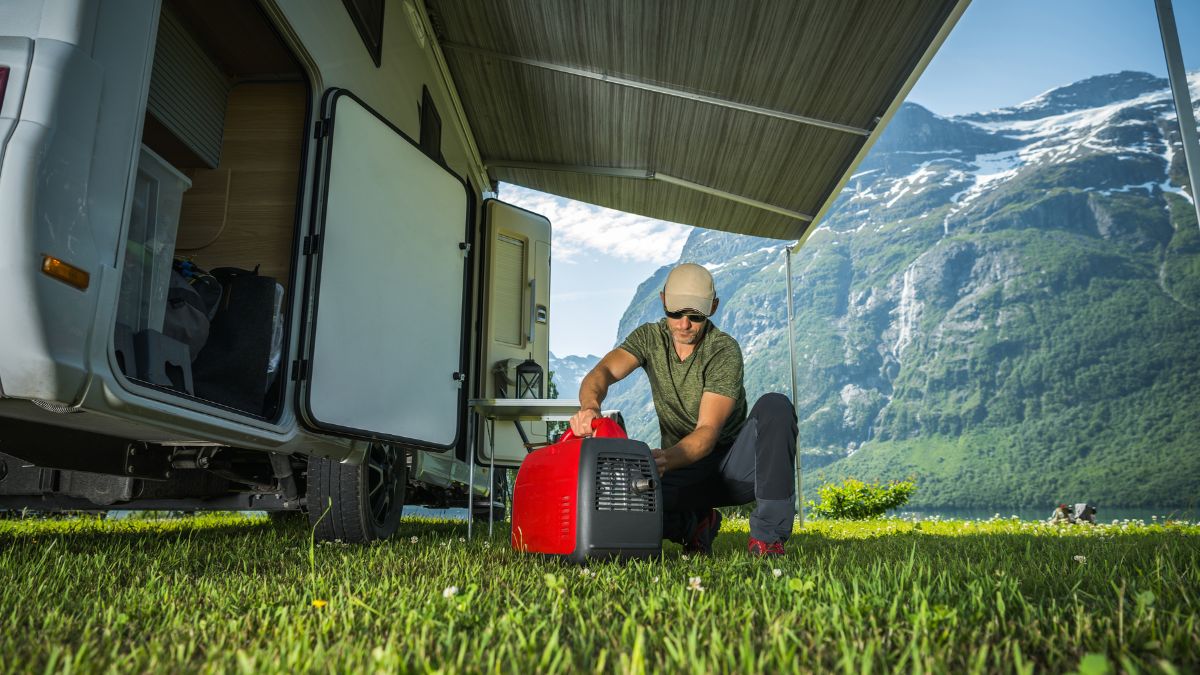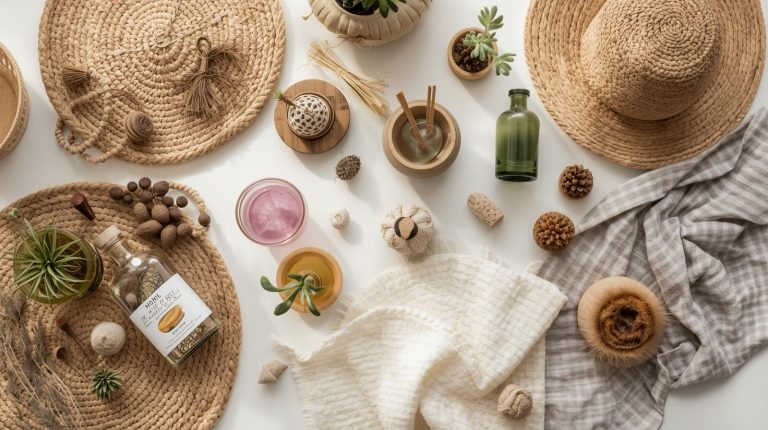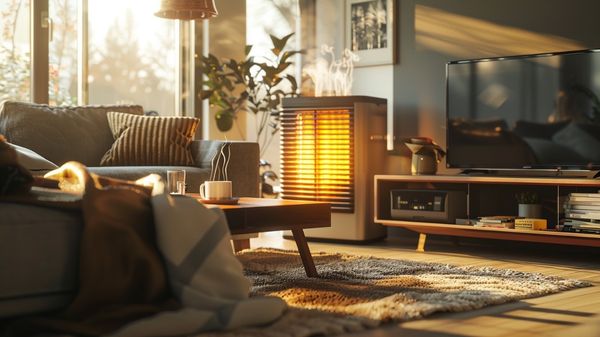A portable solar generator can help you power your home with its own electricity. This device is lightweight and compact, and it packs a decent power capacity. In fact, it is like a portable power bank, with a capacity of 293 watt-hours (Wh). It is more than enough to charge 31 cell phones, operate 15 cameras, power six drones, or power up to 2.5 laptops and a minifridge. It also has enough power to run a TV for a few hours.

Advantages of Portable Solar Generator
Portable solar generators are a great choice if you’re on a budget and need some extra power. These generators are remarkably efficient and can save you a significant amount of money on your electricity bills. Even a 1000-watt solar panel can save you up to $4000 per year! In addition, solar generators do not require much maintenance.
These generators are lightweight and portable. They also come with a battery, which stores the generated energy. Some of them feature lithium-ion batteries, which are lighter and smaller, and last longer than other batteries.
Some of these generators also have a charge controller, which automatically adjusts the incoming power to the appropriate capacity of the battery. Additionally, a portable solar generator has an inverter, which converts the DC energy from the solar panels to AC power.
Portable solar generators are a great choice for people who need backup power when the power grid goes down. They can also power your devices during the night, and don’t produce fumes. They can also be kept indoors, which can keep you safe from looters.
How to Choose the Best Portable Solar Generator
Power outages can be a nuisance for everyone. A backup power system is important for every home. Solar power generators are a great option because they are easy to set up and produce enough power to run standard household appliances.
Important Factors to Consider
When choosing a solar power generator, it is important to consider factors such as your specific needs and the intended usage of the generator. Additionally, the wattage and battery capacity of the generator should be sufficient to support the power requirements of your appliances.
The lifespan and noise level of the generator, as well as the efficiency of its battery management system, are also important considerations. Furthermore, the size of the solar panels should be chosen based on the desired wattage, keeping in mind that larger panels may reduce the generator’s mobility.
Your Needs
There are many factors to consider when choosing a solar power generator. First, you should consider your needs. Are you looking for something portable that is affordable? Or are you looking for a bigger generator that provides backup power for your home? The type of solar generator you choose will ultimately depend on the usage it’s designed for.
Wattage and Battery Capacity
Many solar generators have high power ratings, but their batteries have low capacities, so they cannot support the power of high-powered appliances like refrigerators and microwaves. The best portable solar generator for your home must have a battery capacity of at least 1500 watt-hours and be able to run your high-powered appliances without any problems.
Most solar generators use lithium-ion batteries and last for about 500 cycles. However, there are some generators that have exceptional lifetimes and can run for more than three decades. Moreover, the noise produced by the solar generator should be minimal.
The solar generator’s battery management system is an embedded microprocessor that regulates the charging and discharging of the cells. It also balances the voltage and current of each cell in the battery pack. Moreover, it can shut down the system if it detects an unsafe condition.
The Size of Solar Panels
Larger solar panels tend to consume more sunlight, so consumers looking for a high-wattage solar generator should purchase one with giant plates. However, wide panels also reduce the mobility of the generator. A solar generator’s components include solar panels, lithium-ion batteries, and an inverter. Most batteries are built to last for up to 500 cycles, while inverters have a life span of 10-15 years.
Three Main Factors You Need to Consider
Solar power generators come in a variety of sizes and power outputs. Typically, a large portable model can provide enough power to power most appliances. However, smaller models are often not able to supply enough power to run larger devices. If you plan on using the portable solar generator for a long period, it is best to choose a unit with a higher wattage.
Electricity Needs
Solar generators come with a number of extra features. Some of them feature 12-volt sockets, AC outlets, and USB ports, which allow you to charge a variety of devices, such as smartphones and string lights.
When shopping for a portable solar generator, be sure to ask yourself how much electricity you actually need. For example, if you plan to power two 60-watt light bulbs for two hours each, you need a solar generator with 564 watt-hours of output. To determine how much electricity you really need, add up the amount of electricity each item needs and divide it by the number of hours it takes to charge each one.
Additionally, check the capacity of the batteries too. A high-capacity battery will be necessary if you plan to be completely disconnected from the electrical grid. However, you may not need that much power to keep your whole house running. Usually, solar panels only produce 50 percent of their full potential in normal weather conditions. If you need more power than that, you can purchase a smaller capacity generator.
Power Capacity
The capacity of a portable solar generator is the amount of power that can be used by a variety of devices simultaneously. The capacity is measured in watt hours. A 100W load, for example, could run a large fan or portable refrigerator for several hours. A 1,000-W generator, on the other hand, would be able to hold the same load for about ten hours. A generator with a 1,000W capacity would also be able to recharge its battery during the night.
The capacity of a portable solar generator depends on its battery capacity. The more storage capacity of a generator has, the better. Smaller portable solar generators are great for emergencies, but larger units will power a whole house. However, large portable solar generators are less mobile and require a wall outlet to recharge.
Lithium-ion batteries are the most popular choice for portable solar generators. These batteries are lightweight and can be charged and discharged many times before they lose their capacity. They can be used for several years if properly cared for.
Weight and Size
The size and weight of a portable solar generator are important factors to consider when choosing one. You’ll want a portable device that’s easy to carry around and store. For example, if you’re not likely to find a wall outlet when you’re camping, you’ll want to get a lightweight device. Some portable solar generators have wheels and handles to make them easier to move.
Some generators include solar panels, while others need to be purchased separately. The most common types of solar panels are monocrystalline and polycrystalline. Thin film solar cells are also the cheapest and lightest options. Ultimately, the weight and size of a portable solar generator will depend on how often you’ll use it, but choosing a lightweight model will help you carry it around.
Weight and size are a major consideration, as well as how much power it can generate. If you’re planning to use your generator outdoors, you’ll want to select one that can provide enough power to charge all your electrical equipment. This is an especially important factor when you’re using your portable solar generator for camping. A lightweight unit can also be easily stored in your vehicle.
Top 5 Best Portable Solar Generators You Need to Look
There are a few important factors to consider when using a portable solar generator. One of the first is the wattage. The wattage of a portable solar generator tells you how much power it can produce on average. This will help you determine whether it is sufficient for your needs when the power goes out. The battery capacity is also an important factor to consider.
Several factors will affect the price of a portable solar generator. The larger the solar panel, the more power it can generate. Likewise, the larger the panel, the faster the battery will charge. Lastly, the size and quality of the charger will impact the charging speed.
We’ve already picked 5 of the best portable solar generators you need to look for your choice. They are the best ones available that we believe are suitable to fulfill all of the main factors we’ve discussed above. Let’s take a look at more detailed information about them below.
Disclosure: The following post contains affiliate links. We are participant in the Amazon Services LLC Associates Program, an affiliate advertising program designed to provide a means for sites to earn advertising fees by advertising and linking to Amazon.com.
1. Explorer 1000 Portable Power Station by Jackery

When shopping for a portable power station, consider the size and capacity of the power station you need. You can easily find one with a 100W battery to meet the power requirements of most of your electrical appliances. Whether you are traveling or simply need a portable power source, the Jackery Explorer 1000 can help you stay powered up.
Electricity Needs
The Explorer 1000 is a lightweight power station with a flashy orange color scheme and professional-looking exterior. It packs a lot of power, too, using Tier 1 LG and BAK battery cells. The company that makes the Explorer also stands behind the product, so you can rest assured that it will hold up for years of use. The unit has a thousand-watt-hour (Wh) battery that can power small appliances, such as a laptop or a phone.
Explorer 1000 comes with a DC charging plug and cord. The cable can be plugged into a standard cigarette lighter socket. This is a great option for camping as the charger can run small electronics for a long time. However, it can’t provide as much power as a traditional gas generator. This portable power station is also limited by its inability to support true pass-through charging. You should always use it as a secondary power source under the power provided by a wall charger.
Capacity
Explorer 1000 is a high capacity, affordable portable power station. It is lightweight and easy to carry and has a large capacity of 1000 watts and weighs just 22 pounds. This type of portable solar generator is a great option for remote job sites or power emergencies at home.
The Explorer 1000 uses an MPPT charge controller to regulate the amount of power that can be drawn from the battery. It has multiple output ports, including three standard PURE SINE WAVE AC outlets and two USB-A ports. It also features a built-in LED flashlight with SOS mode. The LCD display lets you know the battery capacity and charge/discharge data. You can also charge it using a solar panel. Two SolarSaga 90W panels can recharge the Explorer 1000 within 11 hours.
Weight and Size
Explorer 1000 portable power station is a great option for people on the go, who are not always able to run their vehicles on electricity. Its lightweight design makes it ideal for long trips and is incredibly lightweight and compact. One of its downsides is that it lacks the expandability of other power stations, but it is still an excellent option for travelers, especially those who lead a nomadic lifestyle.
This Jackery’s portable power station comes with a 1,000-watt continuous inverter and a battery capacity of 1,002 watt-hours. This means that you can power several appliances without the need to recharge the batteries every time you use them. This system can also run a 100-watt LED TV for eight hours. Moreover, it can run a full-size refrigerator under a thousand-watt power.
2. Bluetti EB240 Portable Power Station by Maxoak
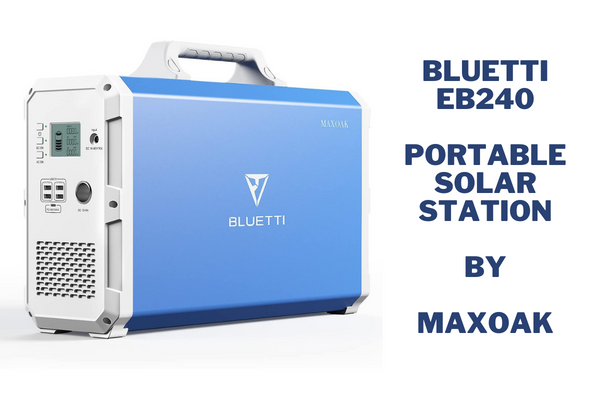
Bluetti EB240 portable power station is a lightweight and portable power source. It measures 6.5 inches wide, 14.4 inches high, and 19.4 inches deep, and weighs 48.5 pounds. It has an ergonomic plastic handle on the top for easy carrying. This portable power source may not be appropriate for individuals with mobility issues, however.
Electricity Needs
Bluetti EB240 offers a variety of charging options for your gadgets, including a USB-C port. This device uses DC power instead of AC power, which maximizes the battery life and number of things it can power. It also uses less energy than most other solar generators and elite devices.
This power station’s capacity is 2400Wh. While that might not sound like a lot, it still is a lot of power. Depending on the usage, it can power a number of smaller devices. But its output power capacity depends on the size of its battery.
Another great feature of the Bluetti EB240 portable power generator is its multiple outlets. You can power your various appliances with its multiple outlets, including your laptop and cell phone. These outlets accept both two-prong and three-prong plugs.
Capacity
Bluetti EB240 Portable Power Station has a 2400-watt capacity and costs about $2000. This is a fair price for the amount of runtime this device provides. This unit is good for indoor and outdoor uses. It features a built-in solar charging port and a proprietary jack for AC charging. This system can fully charge its internal battery in just under ten hours of optimal solar charging conditions. You can also use it as a backup power source in the event of a power outage.
Maxoak Bluetti EB240 portable power generator is designed for outdoor adventurers, campers, RV’ers, liveaboards, and ocean anglers. It features a solar charging port by default and supports up to 500W of solar input. Its solar panel features an MC4 connector for solar charging. It is also capable of MPPT technology, which allows it to track sunlight and charge the internal battery.
Weight and Size
Bluetti EB240 portable power generator is a high capacity solar portable power station that delivers AC and DC power in a lightweight, compact package. It is equipped with the latest lithium ion battery technology and has a 2400 watt-hour rated capacity. It also features a 1000 watt AC pure sine wave inverter and Type-C cable.
This is a portable power station that comes with multiple charging options. It can be used with 120V AC, 12V DC, or solar panels. It produces pure sine wave inverter power, which is excellent for modern electronic equipment and appliances. Furthermore, the unit has low THD, which means it’s safe for sensitive devices.
The Bluetti EB240 portable power station weighs 48.5 pounds. Its size and weight makes it ideal for travel and is easy to carry with you. It is 6.5 inches wide, 14.4 inches tall, and 19 inches deep. Moreover, it features two AC outlets and five USB ports, so you can charge up to five devices at once.
3. Yetti 1500X Portable Solar Station by Goal Zero

There are a few things you should know before you buy a Yetti 1500X portable solar station by Goal Zero. Specifically, how much electricity you need, the weight, and the size of the system are all important considerations.
Electricity Needs
Yetti 1500X portable solar generator is a lightweight, yet powerful solar generator that can meet your electricity needs. It weighs less than 50 pounds and is equipped with a lithium battery that provides up to 1500 watts. The device is compatible with a wide variety of solar panels and battery power stations.
This portable power station has an advanced 2,000W inverter that can handle surges of up to 3,500 watts. Its high output allows you to power electronics such as computers, lights, and even a refrigerator. Its seven-port configuration includes two 120V AC and two regulated 12V outlets.
This Goal Zero’s Yetti 1500X can power a full-sized refrigerator and a 42-inch television for more than 15 hours. It can also power a CPAP machine and a circular saw for about an hour. Most of our home appliances suck up more juice than we realize.
Capacity
Yetti 1500X portable solar generator is a lithium battery-powered portable power station. The device weighs 50 pounds. Lithium batteries are increasingly common in portable power stations, which are also known as solar generators.
Yetti 1500X is capable of powering LED lights, a small fridge, and power tools. It is not designed to run a house for weeks on end. However, if you’re planning to camp out for a week, the Yetti 1500X is capable of providing you with the power you need. It weighs a bit more than the Goal Zero Nomad 20, but it’s significantly more portable than its smaller cousin.
This portable solar generator comes with a smartphone app that provides real-time information about the status of your unit. The app also allows you to communicate with other Goal Zero portable power stations. This feature is especially useful when you’re preparing for a large event.
Weight and Size
The Goal Zero’s Yetti 1500X portable solar station is an excellent option if you are looking for a portable solar power generator. The Yeti 1500X is capable of replacing gas generators and offers a high continuous and surge-watt output. It is designed to provide portable power at job sites. And Goal Zero says that it is so portable that it can plug into any wall outlet. However, it does require two people to carry it.
Yetti 1500X is the Goal Zero company’s flagship portable power station and is great for job sites, tailgating, and camping. It costs around $2000 and is available from the Goal Zero website. It houses a 1500-watt-hour battery and features pass-through charging. In addition, the Yeti 1500X features a charging port for an expansion module.
4. Delta Portable Power Station by Ecoflow
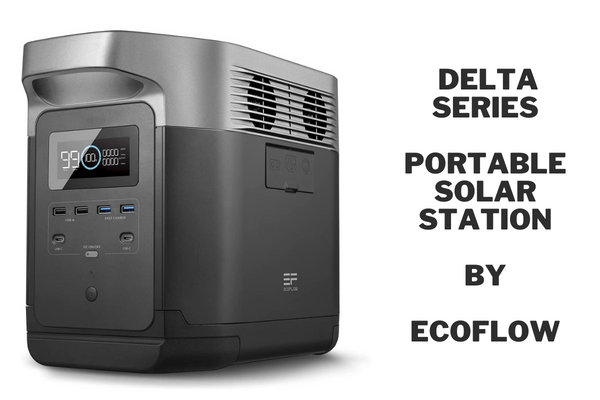
If you’re on a camping trip or just need to keep your home powered up, an Ecoflow Delta portable power station is an excellent choice. Its dual charging capabilities and smart extra batteries expand up to 6 kWh, ensuring you can keep your home powered up even during the worst emergencies. Plus, it supports rapid dual charging, which charges from 0% to 80% in 65 minutes. Plus, it supports 3400W charging speeds, meaning you can charge multiple devices simultaneously.
Electricity Needs
The EcoFlow’s DELTA portable power station is one of the best portable power stations available in the market. It boasts a scalable ecosystem, smart power management, and a battery that provides up to 25 kWh of continuous power. It is a portable power station designed for the outdoor environment and off-grid applications.
Delta 2 version can provide enough power for 90% of household appliances. With a battery capacity of 89 times the capacity of a standard car battery, a Delta 2 can run a lamp, Wi-Fi router, and fan for a total of 30 hours. A small HDTV can operate for eight hours on a charge, while a refrigerator can run for up to 14 hours.
Delta portable power station has a capacity of 13 Amps and has USB Type-A, USB Type-C, and DC ports. Its battery has an 800-cycle life and can be recharged from an AC source in 1.6 hours. This power station also includes a car port and two barrel plugs.
Capacity
If you’re considering a portable power station, you’ll find a lot of options on the market. The rise in portable power usage, and technological advancements, have opened up the portable power station market. Some of these portable power stations are extremely simple, with limited power capacity and output power.
The DELTA 2-portable power station offers a capacity of 1,025 Wh and a maximum power output of 1,800 W. This powerful portable power source can power up to 90% of household appliances. It can recharge an 11-Wh mobile phone up to 89 times and a 60 Wh laptop up to 16 times. The EcoFlow DELTA 2 is compatible with both AC and USB-C ports and comes with a smartphone app for convenient control.
The EcoFlow DELTA’s mini remote interface is intuitive and well-designed. EcoFlow has thought carefully about each design element. A landing page gives you an overview of the Power Station’s vitals, while an overlay shows its current capacity.
Weight and Size
Delta portable power station weighs 99 pounds and is less than two feet tall. It also has a retractable handle and wheels, making it easy to transport. It can charge your smartphone up to 50 times and laptop ten times. While the Delta can charge your device for a longer period of time, you will need to be careful with your battery life.
A portable power station should be charged using a wall outlet, but it’s not necessary to do so. Most models are fine if left unplugged. All batteries lose charge with time, and lithium-ion batteries are no exception. In fact, they lose a little charge every month.
While the Delta Pro weighs 99 pounds, it is still an attractive option for travelers. This portable power station features four 100-watt solar panels and is designed to recharge in less than an hour. It is not waterproof, but it is designed to be portable and lightweight. Its padded wrap-around handles make it easier to carry. It is recommended that you use your legs to lift it, however.
5. Yeti 500X Portable Power Station by Goal Zero

Yeti 500X Portable Power Station offers a full range of features and is an excellent choice for those looking to power their vans or small cabins on the road. This unit’s extra-large storage capacity is a big plus, as is its 2000W AC inverter, which means that it can power-essential circuits in your home. The portable power station also has a variety of ports and a built-in surge protector for safety.
Capacity
If you’re looking for a portable power station with a big capacity, the Yeti 500X is a great choice. This mid-sized rechargeable generator features a 505-watt lithium-ion battery. This new model replaces the 400 Lithium model and is slimmer, lighter, and more powerful.
It’s also solar powered and comes with a 60W power supply. There are two USB-A ports, a USB-C port, and a USB-C PD port. You can also connect it to two AC outlets. There is also a 6-mm USB port. The goal zero yet 500X also has a display that shows input/output wattage, remaining battery percentage, and battery voltage.
Another thing that sets Goal Zero apart from other portable power stations is its inverter. The Yeti 500X’s inverter is able to power a CPAP machine. It’s also cheaper than most competitors.
Weight and Size
While Yeti 500X portable power station is lightweight and small, there are several downsides to the device. The battery runs out two years after purchasing it and you have to constantly plug it in. This can become a nuisance when hiking, or you’re on the go and need to charge your phone. Additionally, this device does not accept a higher power source than 1,200W.
The Yeti 500X from Goal Zero is a mid-size, rechargeable generator with a lithium-ion battery. It replaces the company’s 400-watt lithium-ion model and is slimmer and lighter than its predecessor. It also charges faster and weighs 3.5 pounds less than the previous model.
It packs 20% more power than its predecessor but is 20 percent smaller and lighter. This makes it perfect for camping trips and backyard parties, but it’s also useful for emergencies when you need on-the-go power. The Yeti 500X’s four USB-A and USB-C ports offer different charging speeds. A high-speed USB-C port can recharge a USB-C device in a fraction of the time.
Disclosure: We are participant in the Amazon Services LLC Associates Program, an affiliate advertising program designed to provide a means for sites to earn advertising fees by advertising and linking to Amazon.com.
Charging Tips for Solar Power Generator
One of the most important charging tips for portable solar generators is to position the panels at the best angle. A panel that is positioned at a bad angle during the middle of the day will perform worse than one that is pointed directly at the sun at six in the evening. This is important because even a few degrees can make a big difference. You should also pay attention to the battery size. Longer cables will result in decreased DC power.
When shopping for portable solar panels, you should also check their compatibility with your current equipment. This will ensure a smooth charging experience. For example, check the maximum power output and the maximum input current. Also, make sure you select a portable solar panel with multiple charging ports. A smaller solar panel may not have enough ports to accommodate all your electrical equipment, and a larger panel will work better.
You should charge your solar generator fully before using it. You can do this by placing the generator near a window in a place with full sunlight. This will allow the batteries to charge automatically. Although this is inconvenient, it is possible to install a battery charger in an area where the sun is not as strong as the surrounding areas.
Final Thoughts
If you are looking for a portable solar generator, there are several factors that you should consider. A portable solar generator is not a replacement for an incandescent bulb or a solar panel, which are the two most essential sources of energy. It will not provide you with enough power to heat your home, cook your meals, or even use your cell phone or computer. This means that your portable solar generator will be useless in a real disaster.
Before making your purchase, make sure you look for a high power rating and a high battery capacity. A high-powered solar generator is not very useful if it can only deliver 1500 watt-hours. You should also look for a battery that can provide enough power to run your powerful appliances. However, this is not as important as looking for the most efficient portable solar generator.

